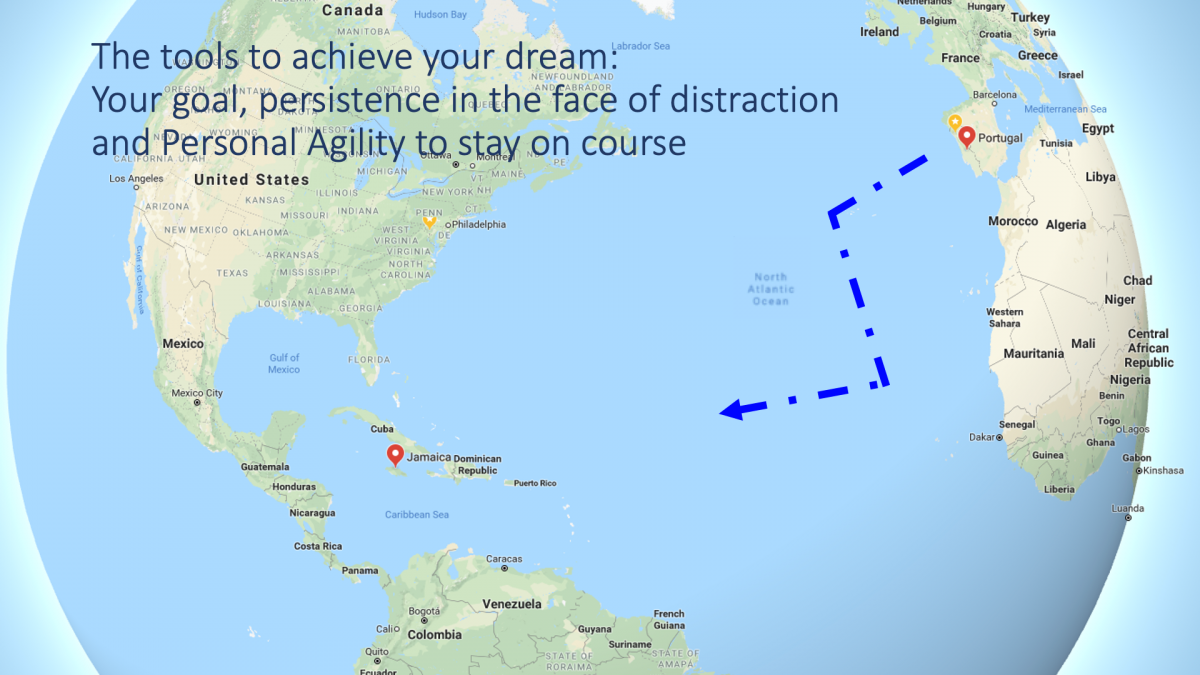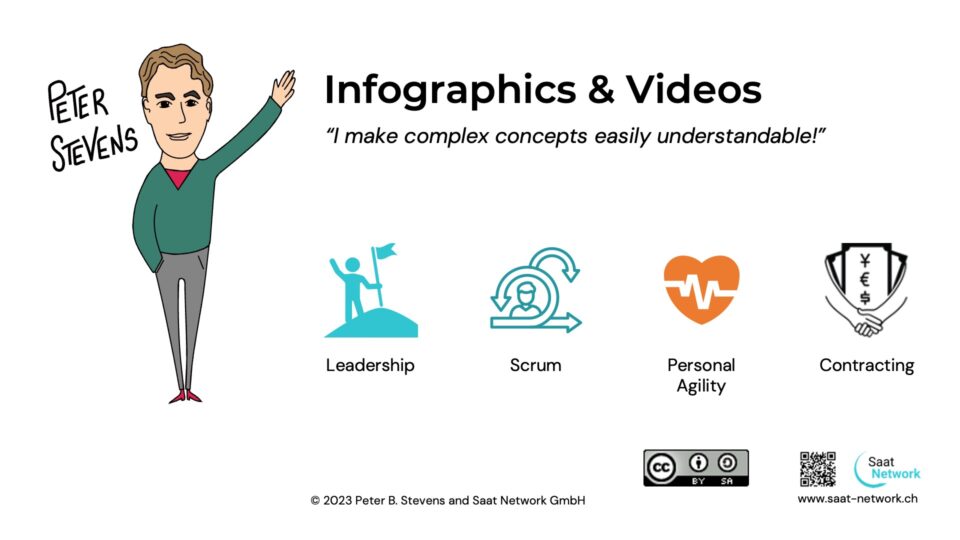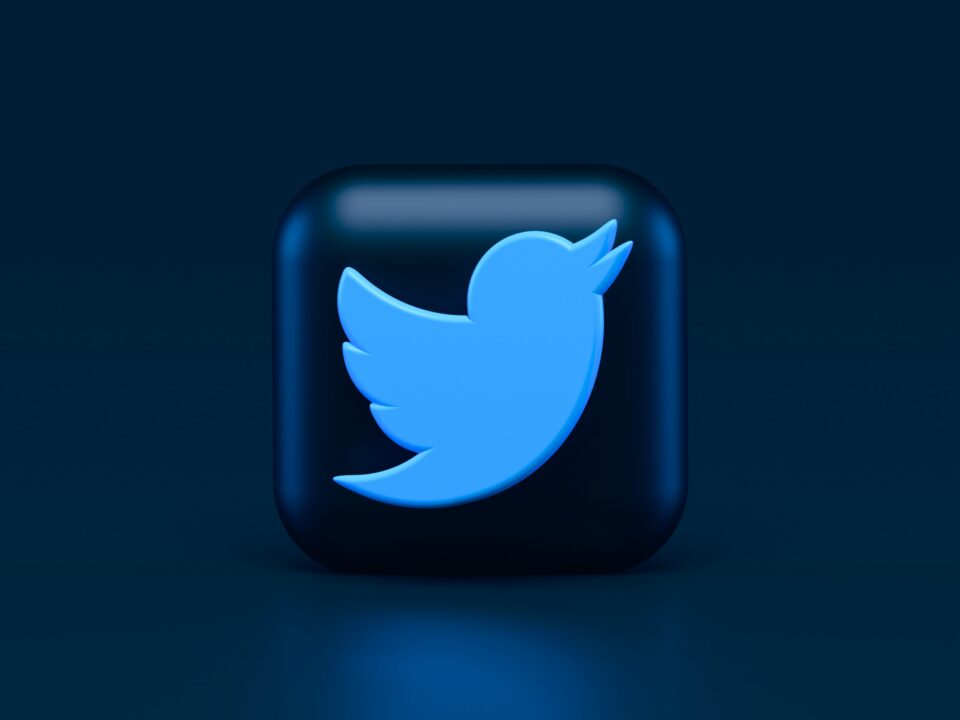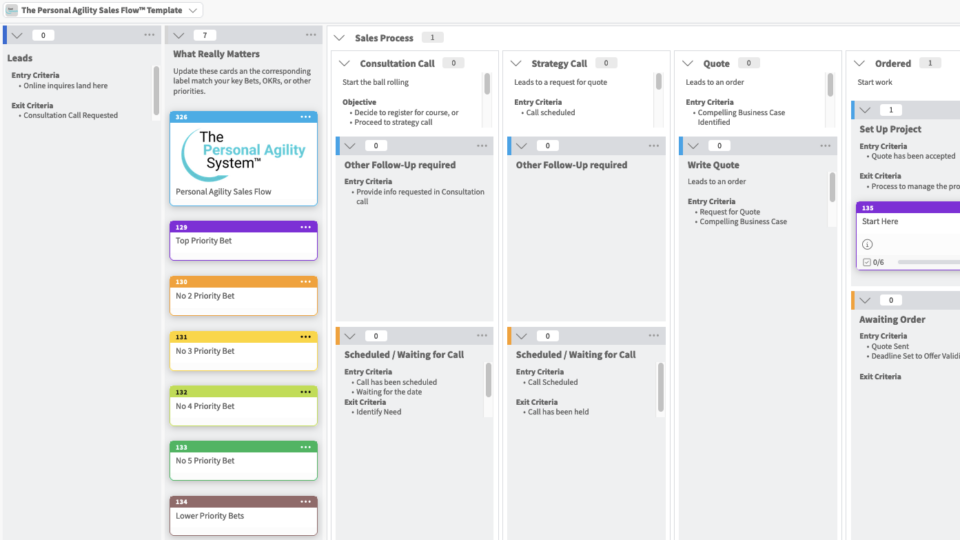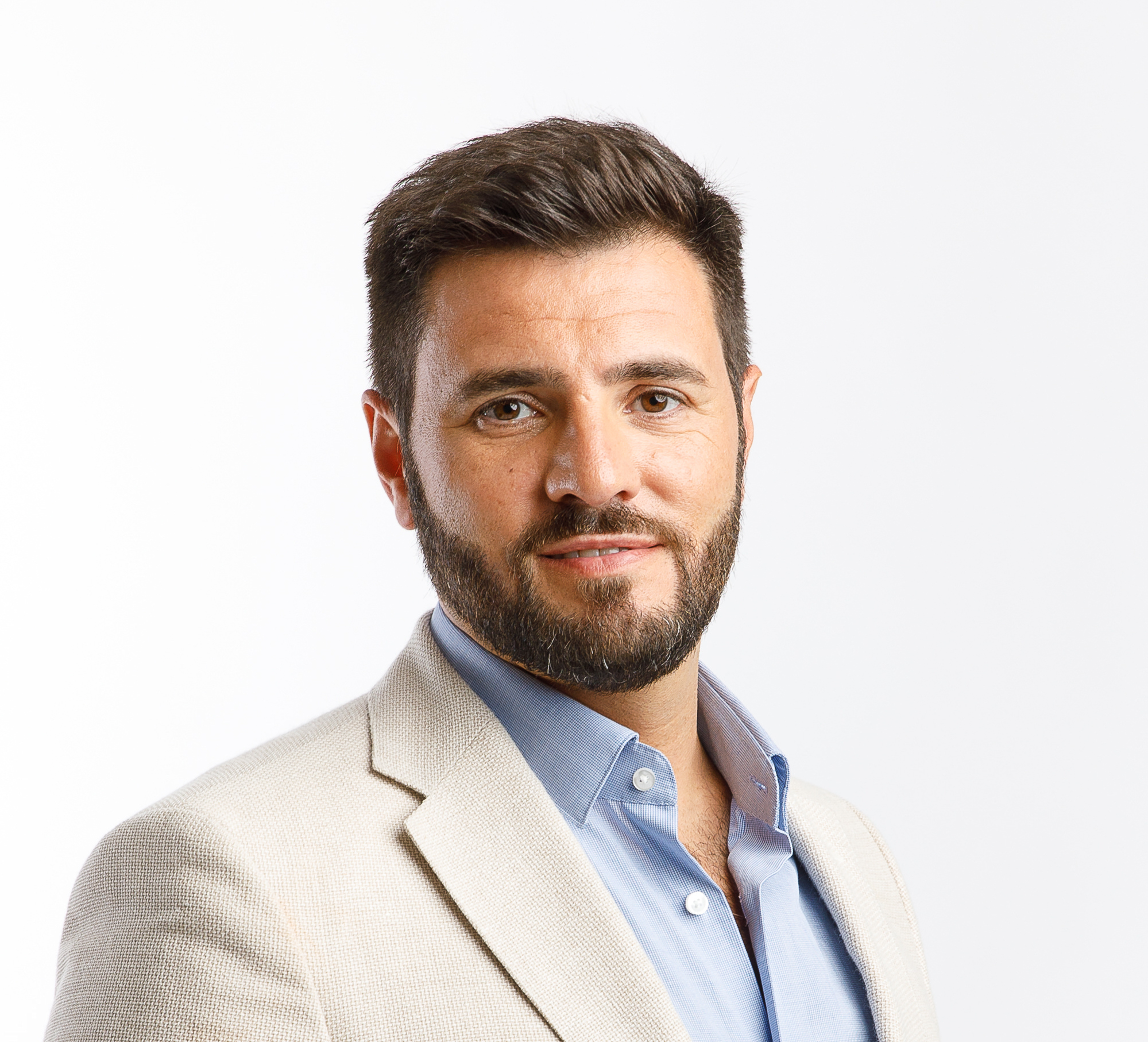
Hugo Lourenco: From Hard Work to Smart Work with the Personal Agility System
29-06-2020
Tuhan Sapumanage: Achieving an Honors Degree and more with the Personal Agility System
29-07-2020I am often asked how the Personal Agility System (“PAS”) compares to Scrum or Personal Kanban. It may surprise you, but I was doing Personal Kanban before I created PAS. I then tried using Scrum on my life; that was closer to what I needed, but Scrum didn’t really solve my challenges either. So my “personal Scrum” evolved and became “my personal Agility” and eventually, The Personal Agility System™.
A few weeks ago, Jim Benson opened the Agile Virtual Summit by explaining Personal Kanban, and Lyssa Adkins closed the summit by sharing her voyage with PAS. This provided an amazing opportunity to learn about Personal Kanban from its inventor and to see how one of the worlds leading coaches interprets Personal Agility.
What do PAS and Personal Kanban have in common?
Since I had previously applied Personal Kanban (actually, Desktop Kanban, with sticky notes wrapping around my laptop), it is not surprising that the two approaches have a lot in common.
Personal Kanban is based on the two Lean principles: 1) Visualize your work, and 2) Reduce your Work in Progress (WIP). The Kanban Board enables visualization and contains three columns, Options, Doing and Done.
PAS applies visualization and limiting WIP too – the PAS Priorities Map has similar columns – though these are not the core principles of PAS. In addition, PAS suggests a “What Really Matters” column to make key priorities visible, and recommends color coding tasks to match them visually to the priorities they support.
Both Personal Agility and Personal Kanban renounce the concept of a to-do list. To-do implies obligation, i.e. that all the decisions have been made about what you have to do. It is important to remember that you have options. In the Personal Agility System, this column is called “Possibilities.”
Finally, multitasking is bad for performance so it is discouraged in both frameworks.
Personal Agility is about you and who you want to become
It is in handling the “Options” column where the two approaches diverge.
Personal Agility starts with an assumption and a metaphor. The assumption is that there is too much to do and not enough time to do it. In the language of Personal Kanban, there are too many options. The practical consequence is that some things will get done soon, some might get done later, and some won’t get done at all.
Urgent items tend to get done quickly, while important things without a pressing deadline often get forgotten. The items you are most likely to forget are often related to your long-term goals, the ones you most want to achieve!
Before you start managing your work, Personal Agility invites you to think about why you are applying PAS: What is the vision for your life or project that you are trying to achieve?
Personal Agility helps you figure out your vision and makes it easier to act in accordance with it. PAS gives you reasons to say yes or no.

The metaphor is navigation, like for a ship on the high seas. The destination is some far-away location that represents your long-term goal – we call this ‘Jamaica.’ Winds and storms represent distractions and interruptions. A storm may blow you off course, and you may so be busy keeping the boat from sinking that you don’t have time to navigate. When the storm passes, identify where you are and where is Jamaica, then turn back on course to get to your destination.
PAS is like a GPS navigator for your life or project. It helps you figure out where is your Jamaica, why you want to go there, and whether you are on course or loosing focus.
The Personal Agility Attitude
Time is the most precious resource each one of has. We only get to use it once. Are you investing your time in things you care about? Or are you just busy satisfying other people’s expectations?
Many people have expectations on you, e.g. your employer, your spouse, your family, or the government. Doing things for others is not automatically bad. It can be very satisfying and much is in fact necessary. But is your purpose in life simply to fulfill people’s expectations as best you can? This attitude smells passive, and is reminiscent of the victim role in Karman’s Drama Triangle. “Poor me, I don’t have much to say about it,” is what it seems to say.
PAS steers you away from victimhood and towards empowerment. In Personal Agility, your options are called “Possibilities” – this column contains the answers to the question, “What could you do?”
PAS encourages you to perform triage on your possibilities. What’s important? What is urgent? What will make you happy? This enables you to prioritize items that don’t have an immediate deadline or that you do purely for your own benefit. Based on your answers, you choose what you’d like to accomplish in the upcoming week. It’s your boat. Take command and set your course.
Actively deciding what to prioritize puts you in charge. This change from victimhood to leadership appears frequently in Personal Agility case studies.
Dealing with Distractions and Interruptions
No plan for the day survives the first call from a customer! – Larry Pakieser
In Personal Kanban, you write your options on cards. Then look at your options, and reflect on the complexity of each task, what relationships are involved, when things are expected, etc. Fill up your “Doing” column, while respecting the work in progress (“WIP”) limit. In the examples, the WIP limit was set to three, which means that only three tasks may be in progress at a time. Other tasks have to wait until one of them is completed.
Sequencing is determined when a slot opens opens up in Doing. When you move a card to Done, you can pull a card into Doing. When Doing is full, you concentrate on getting those things done.
What happens when something unexpected comes up? I have not been able to find a simple answer to this question in Personal Kanban. Personal Kanban does value focus and getting things done, so I suspect the answer is to push back on unplanned work. Making space for something by moving an item from Doing back to Options seems like tacitly raising the WIP limit.
In Personal Agility, the basic idea is to be aware of how what you are doing relates to what you care about. When deciding how to spend your time, be clear on what matters and why. The weekly “Celebrate and Choose” lets you to reflect on what you’ve accomplished – it is probably different that what you expected, but you pat yourself on the back anyway – and to choose items that serve a purpose that matters.
Personal Agility recognizes that life happens faster than you can plan. If something unexpected comes up, you could push back by saying ‘no’ or perhaps ‘later.’ You could decide to deal with the issue right away. You’re the captain of your boat so you get to decide the right response. Whichever you choose, you celebrate what you get done!
What happens when your phone rings, and it’s your boss, a customer or a family member with something urgent? If you decide to do it, that’s okay. Depending on who asks, you might not have much choice.
Personal Agility helps you handle interruptions and distractions. The PAS Priorities Map has a This Week column and a Today column. This Week contains the items you’d like to accomplish this week. It represents your course. The Today column in the PAS Priorities Map has a WIP limit of one. If you only finish one thing today, what should it be? Put it in the Today column.
If you decided to do something unplanned, how do you handle it in Personal Agility? Simple! When you finish dealing with that unplanned issue, record it in the Done column, then go back to the task in Today. Note the detour and resume course to Jamaica.
What happens if a notification or some click-bait in your browser leads you astray and you waste an hour surfing the net? When you’re ready to focus on work, look in the Today column and go back to work on that item! Being easily distracted is often a sign that you need a break, so maybe some rest is advisable. You may even want to silence notifications or install an ad-blocker!
Personal Agility makes it easy to remember what you want to be doing. Personal Agility helps you set a course and hold the course.
What are the key differences
In the following table, I have tried to identify the characteristics that differentiate Scrum, Personal Kanban and the Personal Agility System from each other.
| Scrum | Personal Kanban | PAS | |
|---|---|---|---|
| High Level Concept | Scrum is a simple, team-based framework for solving complex problems. | Personal Kanban is a lightweight and simple system to manage your professional tasks as well as your life tasks. | The Personal Agility System (PAS) is a simple coaching framework to help you achieve things you care about. |
| Intended Scope | Teams creating products for a company or client | Individuals organizing themselves (at work?) | Transformational improvement in life / work |
| Basic Principles | Inspect & Adapt Empirical Process Control | Visualize Work, Limit Work in Progress | You have too much to do. Achieving a long-term goal is like navigating to a far-away destination. |
| Practitioners Goal | Deliver value to customers/stakeholders | Satisfy the expectations from those around you | Do things that matter. Clarify your vision, prioritize accordingly |
| Role of Vision | Required, but not specified how to create one | Not part of the method | What really matters guides priorities for choosing tasks |
| Essential Tools | Product and Sprint Backlogs, Roles and Events, Increment, Definition of Done | Kanban Board, WIP Limits | Six Powerful Questions, PAS Priorities Map and Breadcrumb Trail |
| Role of the Framework | The Scrum Guide defines Scrum and a team should strive to do Scrum as described | The framework is a place to start. The tools are there to help you. | The framework is a place to start. The tools are there to help you. |
| Handling interruptions and distractions | Changing the sprint goal is not allowed. Scope changes are possible but discouraged. Unplanned work is an impediment. | ? | Recognize them. Say no to unimportant stuff. Be forgiving if you get blown off course. Then get back on course. |
I want to emphasize there is no “good” or “bad” here. Each approach is simple, easy to understand, and works well in the context for which it is intended. They help you tackle hard problems.
What are the biggest differences? All of these approaches help you get things done. I see three key areas where the Personal Agility System is unique:
- The importance of vision – It’s not just about getting things done, it’s about achieving an important purpose.
- The attitude that Personal Agility encourages – It’s about getting off the treadmill and into the driver’s seat.
- The approach to dealing with interruptions and distractions – pragmatic and forgiving, while helping you stay focused on the big picture.
If Lean is about optimizing the work, then Personal Agility is about you. If Scrum is about producing value for a customer, then Personal Agility is about investing more of your time in things you care about.
Personal Agility is about transformation. If you have a dream, the Personal Agility System can help you make it come true.
Emergence and the role of coaching
The Personal Agility System is not a process to follow nor just a tool to use. At its heart, PAS is a series of Powerful Questions to ask and discuss. Although you could do it alone, the transformational power really emerges when you work with someone else.
Maria and I have observed (and at least in my case, experienced) that if you are doing Personal Agility by yourself, you can lose focus on What Really Matters. You move things from waiting to working to done. The hamster is busy. The wheel spins. You’re doing a lot, but somehow you’re not getting the right things done.
To get the most out of the Personal Agility System, I would encourage you to work with a celebration partner. This could be a coach, a staff member, a colleague, a friend or your spouse. Their impulses can inspire you to rethink your priorities so something new can emerge. We have seen many people become transformed, energized, successful and happy through Personal Agility, more often than not with the help of a coach.
Individuals and interactions between them are the basis of emergence. With its coaching approach based on Powerful Questions, the Personal Agility System not only helps you get better at getting things done, it enables something new and better to emerge.

